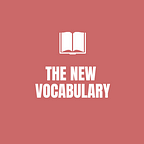The origin of the term intersectionality and why you should incorporate it in your writing today
Intersectionality
First, let me give you a very very brief history of the term intersectionality. I say very very because the history of this term knows many paths. Let’s start with the beginning.
First, it is a theory that is developed by Kimberlé Crenshaw, a civil rights activist and scholar. In 1989 Crensham introduced the theoretical framework in her paper “Demarginalizing the Intersection of Race and Sex: A Black Feminist Critique of Antidiscrimination Doctrine, Feminist Theory and Antiracist Politics(PDF file).” In this paper Crenshaw centers Black women’s experiences and argues the expansion of feminist theory and anti racist politics by embracing the intersection. Crenshaw explains how people can walk on different paths of exclusion, and are therefore likely to be hit by both. These multiple so called paths create multiple levels of injustice. Depending on the person, they experience multiple ways of discrimination such as racism, sexism, ablism or transfobia.
After she wrote her paper the term intersectionality travelled through studies such as, queer, feminism, race, gender, and sexuality. The term was explored by academics for years until it hit the mainstream during the women’s march of 2017.
The word then has been used throughout many perspectives as it has been interpreted in different ways.
Now secondly, let’s elaborate a bit more on the term intersectionality. In order to stay with the origin of the theory and the importance of the correct usage of the word.
Let me give you an example. Imagine a white cis hetero sexual woman and an African-American lesbian cis woman, who both work in the same company, are around the same age and practice the same tasks. Due to different identity ‘markers’ they do not experience the same discrimination. The African-American lesbian cis woman experiences racism, homophobia and sexism at the same time. While the white cis heterosexual woman experiences sexism.
Crenshaw says that in this society we tend to talk about race inequalities separate from gender inequalities or class status. For example, we do not see the overlapping inequalities of an immigrant status and their sexual preference.
In her TED talk video: The urgency of intersectionality, Crenshaw begins with “okay, I’d like to try something new”. She then invites the public to stand up and adds “if you are able to do so”. There are about 200 to 300 people in the room. She continues by telling the public that she will mention some names, and whenever someone does not recognize the name she invites the person to sit again. She says “let’s see what the last person standing knows”. At this point the audience is laughing. Then she begins saying names out loud. Eric Garner, Mike Brown, Tamir Rice, Freddie Gray. At this point, half of the public is still standing. Crenshaw then continues. Michelle Cusseaux. Over half of the public is sitting down at this point. Tanesha Anderson. Only a few people are standing now. Aura Rosser. Just a couple of people are still standing. Meagan Hockaday. Just four people are still standing.
This is a powerful and visible demonstration of underrepresentation, in the media and beyond, of African-American women who have been killed by the police.
Using an intersectional lens is acknowledging reality, and therefore also acknowledging the historical context regarding the framework of intersectionality. It means that, when you talk about equality, inclusivity or representation, it is useless to only focus on one social identity of a person.
So, why am I addressing this theoretical framework? Because if you want to write more inclusive, an intersectional way of thinking should be implemented in your vocabulary.
To stop stereotyping. To stop generalizing. To stop assuming.
To start listening. To start representing. To write realistic.
